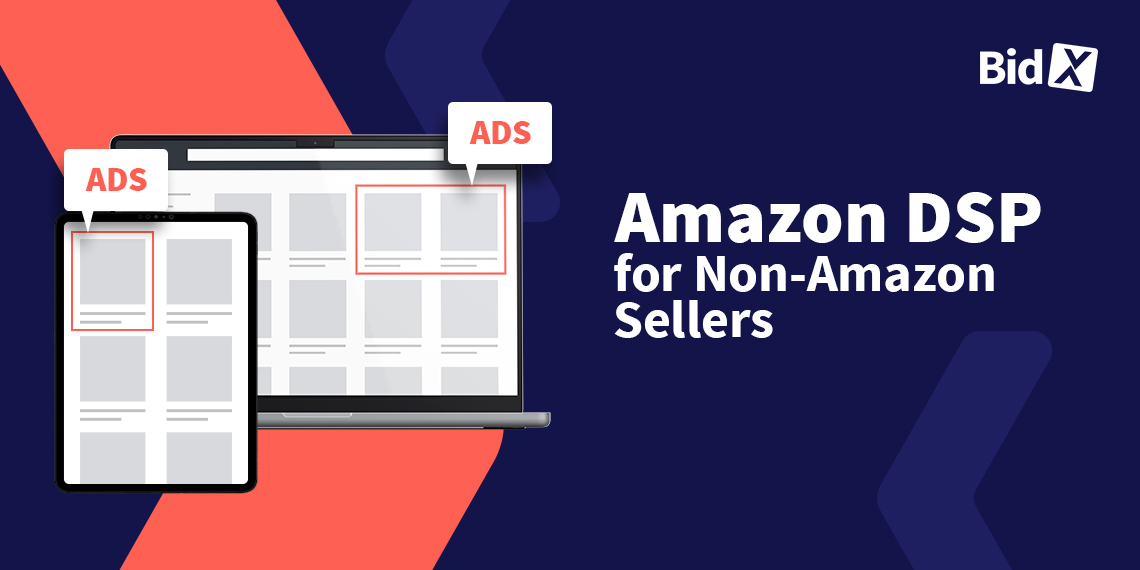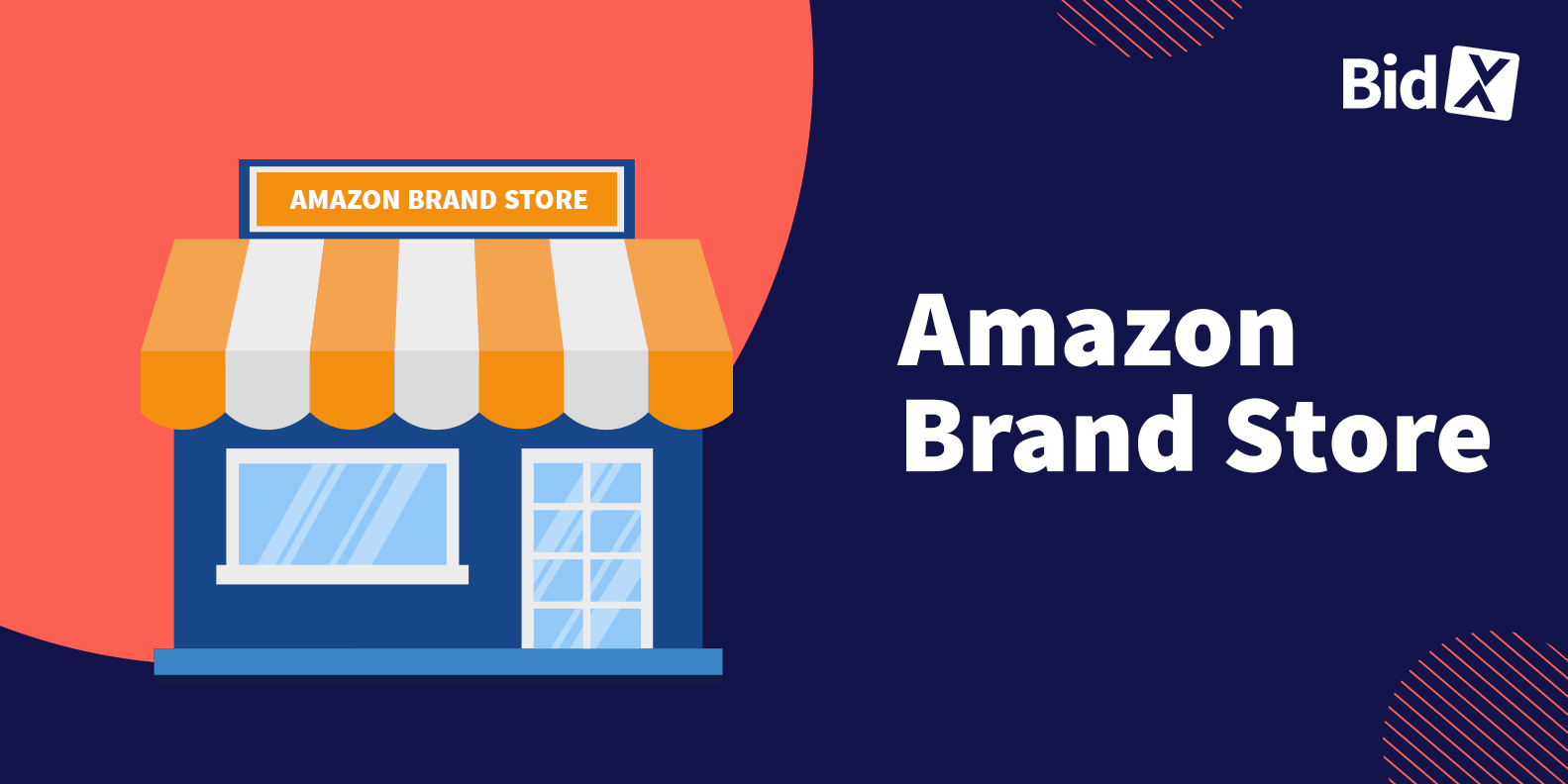How to use DSP (also as a non-Amazon seller)
Amazon.com had 2.4 billion visits in September 2022. Amazon thus ranks first worldwide in the "e-commerce & shopping" category.
These figures illustrate how important Amazon is for online retailers. As one of the most promising platforms, Amazon offers retailers the opportunity to increase their brand awareness and attract new customers.
The Amazon DSP (Demand-Side Platform) helps in this regard. What is special about the DSP is that it is not only suitable for sellers who sell on Amazon, but also for sellers or service providers who operate their own online store outside of Amazon. With the help of Amazon's user data, they have the opportunity to address suitable target groups and place ads for their products on the most popular websites and apps.
What is DSP?
Amazon's Demand-Side Platform is used by advertisers for display and video ads. Not only Amazon Sellers and Vendors, but also external third parties who do not sell on Amazon have the opportunity to use the DSP. The DSP is based on Amazon's extensive data, which allows you to target exactly those customers who have a high likelihood of buying. Using the audiences provided in the DSP, you can create audiences based on search behavior, product visits, and purchase behavior to specifically target Amazon customers.
If you are interested in Amazon's DSP, you have two options to gain access. You can use the Amazon Managed Service with a minimum purchase of €10,000 or opt for the Enterprise Self-Service, which is available for selected companies like BidX.
Who can use the DSP?
Theoretically, all retailers who sell products on Amazon can also use the Amazon Demand-Side Platform. However, the use is linked to a minimum budget, the amount varies from country to country. If you want to use the DSP, we recommend a minimum budget of 5,000 EUR per month for the duration of 3 months to start a DSP campaign.
If you are interested in using the Demand-Side Platform, you can easily request a no-obligation offer from BidX.
In addition, even those who do not (cannot) sell products on Amazon can get access to the DSP. This means that every e-commerce store has the possibility to use the Amazon DSP - no matter if you sell insurance or shoes. However, you can't run ads directly on Amazon that then link to your store. Besides that, you can use the target groups and the network of the Amazon DSP to the full extent and direct customers to your store via advertisements.
Why is the Amazon DSP so powerful?
Amazon's DSP gives you access to high-performance targeting options. When you use the DSP, you have access to Amazon's customer data and analytics about customer search and buying behavior. This gives you a huge trove of data that Google or Facebook, for example, can't offer you. This data helps you to address your target group in the best possible way. In many cases, this can increase the conversion rate, since in most cases there is an interest in buying.
Using DSP can tremendously increase the visibility of your brand and products, as the ads are placed on popular websites. Moreover, you can reach your exact target audience and target the ads extremely granular. Linked to this, you also have exclusive access to Amazon's own websites and apps, allowing you to secure prime advertising space.
You also get data-driven insights and performance reports before and after your campaigns. With this information, you can continually optimize your strategies to increase your success.
How to use Amazon's data to your advantage
Choosing the right target group is essential for the success of your campaigns. With the help of predefined Amazon target groups or user-defined target groups, you can exclusively address certain groups of people.
The precise targeting possibilities are among the biggest advantages of DSP. In the following, we will go into some target group types.
Retargeting
Retargeting can lead to a significant increase in sales. It allows you to target people who have previously interacted with your products. These interactions include, for example, a search for the product or a page view of a product detail page. The big advantage of retargeting is that it is highly likely that the customer is already interested in your product, so you can maintain your RoAS.
Lifestyle
There is also the option to select your target group based on lifestyle segments. Here, the selection is based on customers' search and purchase data on Amazon. For example, if you sell cars, it might make sense to target parents-to-be who have searched for baby accessories in the past and might be looking for a bigger car due to the addition of a new family.
Behavioral
Behavioral targeting also takes into account buying and search behavior. Your ads are displayed when people behave in the way you select. For example, if you offer device insurance, you can select customers who have frequently purchased expensive technology devices in the past.
Lookalike Audience
The Lookalike Audience are people who behave similarly to a group you have selected. For example, you have the option to create a Lookalike Audience of your customers and then you can target the people who behave similarly to your customers.
Tip: This option is especially useful if you don't sell on Amazon yourself. You can use a pixel to track all events on your website and create suitable Lookalike Audiences.
Contextual
Search behavior on other websites can also be considered for targeting. With the Contextual targeting option, you can target people who are interested in a topic related to your product. For example, if you sell insurance, people who have accessed articles about different insurance providers are interesting.
Advertiser
With this option, you select the target groups based on your own advertising data. To do this, you should upload data from your Data Management Platform, DMP for short, to the Demand-Side Platform.
Demographic
This target group type can be based on various demographics, such as age, gender, income level, education, geography, or even household size.
Other options
In addition, you can also select users by specific browsers or devices.
Measuring success as a non-Amazon seller
With the help of DSP Pixel, you can track all interactions on your website. First of all, you need to create conversion tags that you can implement in the head and body of the website. These tags provide important data for the platform. When customers click on your ads and are redirected to your website, the transaction is tracked using the conversion tracking tag. This data is sent to the DSP, so you can track your purchase results and optimize your campaigns.
Bottom line
The DSP can be a great opportunity for ecommerce sellers - whether on or off Amazon. If you are selling outside of Amazon, the biggest advantage of DSP is clearly Amazon's vast trove of data. This allows you to target customers at every stage of the sales funnel. With Amazon DSP, you can stand out from your competition, expand your reach, and target customers more effectively.
BidX is your perfect Amazon DSP partner! In addition to access to DSP, we offer you numerous advantages as an Amazon Advanced Partner. Our experts have extensive knowledge in DSP advertising and manage seven-figure advertising spend for our clients.
BidX benefits include low management fees, comprehensive support, complete setup of your campaigns, continuous optimizations, strategic consultations, regular reporting and much more!
Schedule an appointment with us now to advertise on Amazon's DSP!


.png)



